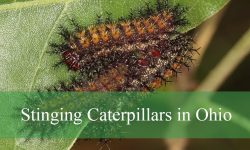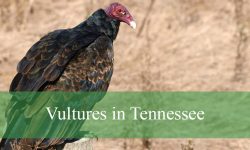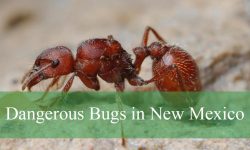Montana’s wetlands, ponds, and forested valleys echo with the sounds of frogs during spring and early summer. Despite the state’s long, cold winters and dry plains, these amphibians have adapted to thrive in diverse environments — from alpine lakes in the Rockies to the grassland marshes of eastern Montana.
Each species has its own distinctive traits and survival strategies. The Columbia Spotted Frog prefers high mountain ponds, the Northern Leopard Frog leaps through open meadows, and the Wood Frog endures freezing winters with remarkable resilience. In contrast, the Boreal Chorus Frog and Plains Spadefoot bring life to the prairies after seasonal rains.
This guide introduces six fascinating frog species found across Montana, providing detailed information on their identification, behavior, and habitats. Learning about these amphibians reveals just how vital they are to the state’s rich and balanced ecosystems.
Different Types of Frogs Found in Montana
Columbia Spotted Frog (Rana luteiventris)
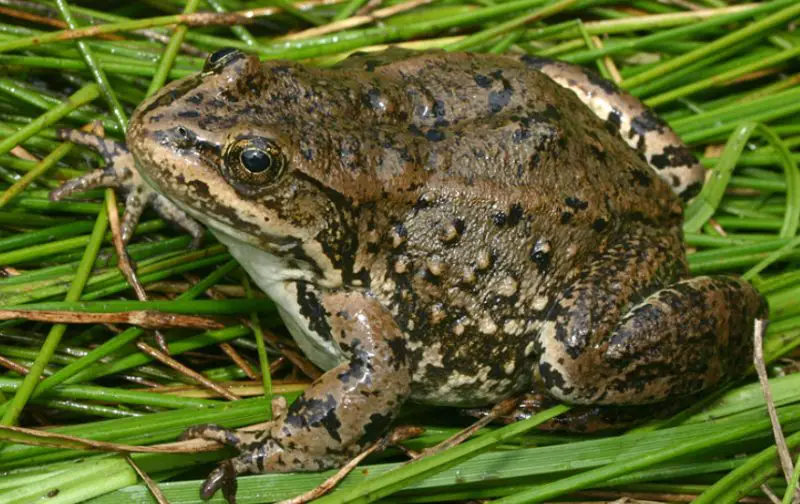
The Columbia Spotted Frog is one of the most widespread amphibians in Montana, thriving in the state’s wetlands, ponds, and slow-moving streams. This medium-sized frog has a smooth, moist skin that ranges in color from olive green to light brown, often speckled with irregular dark spots across its back and legs. Its underside is typically pale or yellowish, sometimes showing a faint orange or reddish hue toward the hind legs, especially during the breeding season. Its eyes are positioned slightly upward, giving it a characteristic wide-eyed appearance when resting near the water’s surface.
Adult Columbia Spotted Frogs generally measure between 2 to 4 inches in length, with females typically larger than males. Their long hind legs and extensive webbing between their toes make them excellent swimmers. When handled or observed closely, one can notice that the dorsal spots are not perfectly round but irregular and sometimes outlined in lighter tones. The frog’s tympanum (external eardrum) is visible but not as prominent as in some other frog species, aiding in its identification in the field.
Behaviorally, Columbia Spotted Frogs are mostly aquatic and are often seen basking quietly on the edges of shallow ponds or among aquatic vegetation. They are opportunistic feeders, consuming insects, spiders, small crustaceans, and even tadpoles. During colder months, they hibernate underwater in the muddy bottoms of ponds or lakes, remaining inactive until the ice begins to melt in early spring. Their breeding calls, soft and clucking, can often be heard from March through May in western Montana.
This species prefers habitats with abundant aquatic vegetation — marshes, beaver ponds, slow streams, and wet meadows. It thrives best in clean, unpolluted water and can often be found in high-elevation wetlands in the Rocky Mountains. Juveniles disperse from breeding ponds in summer, moving into damp forest areas or grassy edges to forage.
In Montana, Columbia Spotted Frogs are common throughout the western half of the state, especially in regions near Glacier National Park, the Bitterroot Valley, and the Big Hole Basin. They serve as an important ecological indicator of water quality, as their population health often reflects the state of wetland ecosystems in Montana’s mountainous regions.
Northern Leopard Frog (Lithobates pipiens)
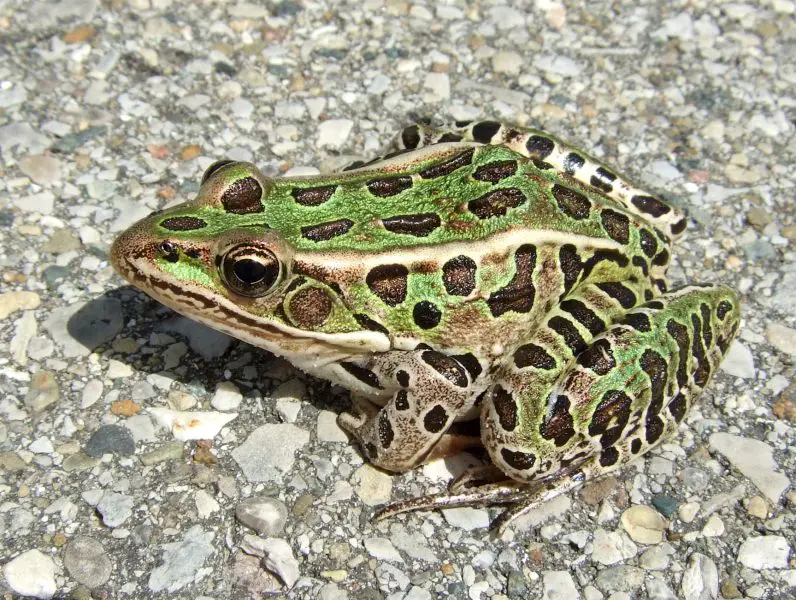
The Northern Leopard Frog is one of Montana’s most recognizable amphibians, easily identified by its striking pattern of dark, rounded spots on a green or brown background. The skin is smooth and moist, with two distinct light-colored dorsolateral folds running from the eyes down to the lower back. The combination of bright green coloration and well-defined black spots gives it the appearance of a leopard’s coat, hence the name. The belly is creamy white, and the inner thighs often show a hint of pink or orange during the breeding season.
Adults typically measure between 2 and 4.5 inches in length. Males can be distinguished from females by their smaller size and the presence of darker thumb pads during the mating season. The Northern Leopard Frog’s long legs are adapted for both jumping on land and swimming in open water. When startled, it can leap up to three feet in a single bound, making it one of the strongest jumpers among Montana’s native frogs.
Behaviorally, these frogs are both diurnal and nocturnal, often active during the day in spring and summer and more nocturnal during hotter periods. Their diet includes beetles, crickets, grasshoppers, slugs, and even smaller frogs. During the breeding season, which occurs shortly after ice-out in spring, males gather in shallow ponds and produce a snoring-like call to attract females. Tadpoles transform into young frogs by late summer, dispersing into nearby grassy fields or along riparian zones.
Northern Leopard Frogs prefer habitats with abundant vegetation — marshes, ponds, lakes, and slow-moving streams bordered by grasses or sedges. They need both aquatic environments for breeding and moist meadows or grasslands for foraging. In the fall, they migrate to deeper waters to hibernate in mud or debris at the bottom of ponds or streams.
In Montana, the species can be found across much of the state, though populations are more common in central and eastern Montana. However, declines have been recorded in some areas due to habitat loss, pollution, and disease (particularly chytrid fungus). Conservation efforts are ongoing to restore their natural habitats and maintain healthy wetland ecosystems where this beautiful frog can thrive.
Wood Frog (Lithobates sylvaticus)
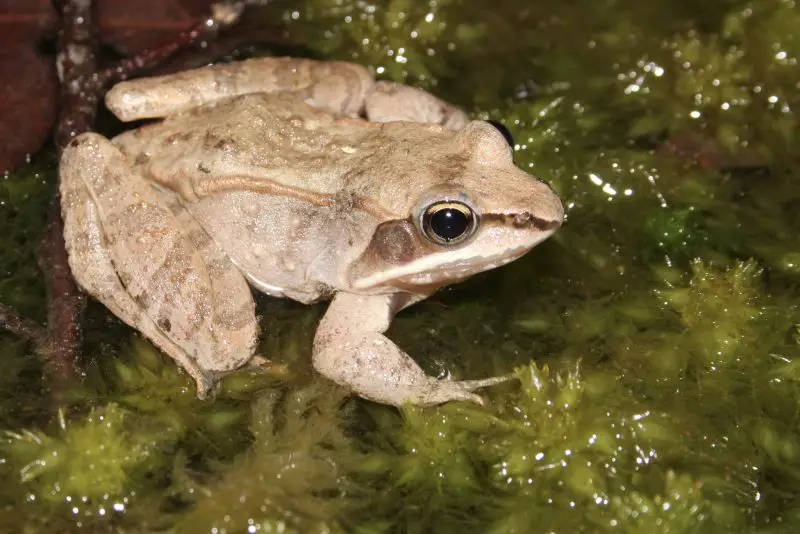
The Wood Frog is a fascinating species known for its incredible cold tolerance and ability to survive Montana’s harsh winters. It is easily recognized by its distinctive dark mask-like marking that extends from the snout through the eye and down toward the eardrum. The dorsal color can vary from tan and reddish-brown to gray, allowing it to blend perfectly with leaf litter on the forest floor. Its belly is pale, often white or yellowish, with a darker throat in males.
This species is relatively small, averaging between 1.5 and 3 inches in length. Unlike many other frogs, Wood Frogs have relatively short legs and less webbing between the toes, as they are primarily terrestrial. Their skin is smooth, and the body is somewhat squat compared to aquatic frogs. When picked up, they emit a short, quacking sound, which also serves as their mating call during early spring.
Wood Frogs are active mainly in spring and early summer, often being the first frogs to emerge after snowmelt. They breed in temporary pools or shallow ponds formed by melting snow, laying large clusters of eggs that develop rapidly before the water evaporates. Their diet consists of small insects, worms, and other invertebrates found in moist leaf litter. By late summer, they move deeper into forests, seeking damp shelter under logs or mossy ground.
One of the most remarkable traits of the Wood Frog is its ability to survive being partially frozen during winter. Through natural antifreeze compounds in their blood, they can withstand ice forming in their body tissues and resume normal activity once temperatures rise. This adaptation allows them to inhabit colder regions where few other amphibians can survive.
In Montana, Wood Frogs are primarily found in the northwestern and mountainous regions, particularly near Glacier National Park and along forested wetlands. They are often seen near wooded ponds and bogs, making them an essential part of the forest ecosystem and a key species for studying cold-weather amphibian adaptations.
Pacific Treefrog (Pseudacris regilla)

The Pacific Treefrog, also known as the Pacific Chorus Frog, is one of the smallest yet most vocal amphibians in Montana. These frogs come in a variety of colors, including green, brown, tan, or even reddish tones, and can change color depending on temperature and surroundings. A key identifying feature is the dark eye stripe that runs from the nostril through the eye to the shoulder. Their moist, slightly bumpy skin helps them blend seamlessly into vegetation and leaf litter.
Adults typically measure between 1 and 2 inches in length, making them among the smallest frog species in the state. Despite their small size, they possess large adhesive toe pads that allow them to climb vegetation and even vertical surfaces. The toes are only partially webbed, distinguishing them from fully aquatic species. Males are usually smaller and have a darker throat during the breeding season due to the presence of vocal sacs.
Pacific Treefrogs are highly vocal, especially during the breeding season, producing a loud, two-part “ribbit-ribbit” call that has become iconic in movie sound effects. They breed from early spring to midsummer, often in small ponds, ditches, or marshes. Females lay clusters of eggs attached to submerged vegetation, and tadpoles develop rapidly in warm, shallow water. They feed primarily on small insects, spiders, and other arthropods.
These frogs prefer moist environments with ample vegetation — marshes, ponds, meadows, and even suburban gardens. Unlike other species, they are also comfortable in temporary or seasonal water sources. During dry or cold periods, they retreat under logs, rocks, or dense grass to conserve moisture and avoid predators.
In Montana, Pacific Treefrogs are mainly found in the western part of the state, especially in valleys and foothills near Missoula and Kalispell. Their adaptability to varied environments makes them one of Montana’s most widespread and resilient amphibians, often heard long before they are seen.
Boreal Chorus Frog (Pseudacris maculata)
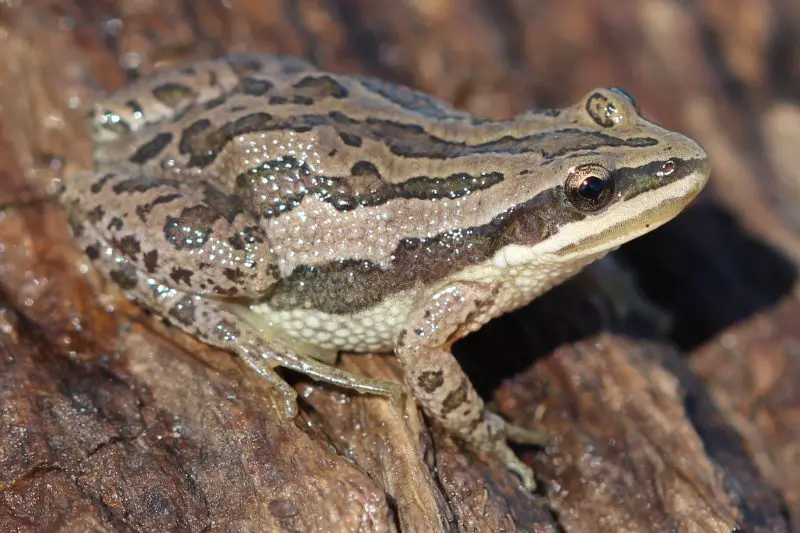
The Boreal Chorus Frog is one of the most commonly heard frogs across Montana, known for its loud and distinctive breeding call that resembles the sound of running a finger across a comb. Small and secretive, this species has smooth skin colored in shades of brown, olive, or gray, with three dark stripes or rows of spots running down the back. Like the Pacific Treefrog, it has a dark stripe running through the eye to the shoulder, helping it blend into grassy habitats.
Adults are small, typically measuring 1 to 1.5 inches in length. They have slender bodies, short legs, and slightly webbed toes with small toe pads for climbing low vegetation. The throat of males often darkens during the breeding season due to their vocal sacs, which expand dramatically when calling. Although small, their voices are surprisingly powerful and can be heard echoing from ponds and marshes on spring nights.
Behaviorally, Boreal Chorus Frogs are early breeders, emerging as soon as the snow melts. They prefer shallow, temporary ponds or flooded meadows for breeding, laying egg clusters attached to submerged stems or grasses. Tadpoles hatch within days and grow quickly to transform before their breeding pools dry up. Outside the breeding season, adults live among grass, leaf litter, or under debris near moist environments.
These frogs are opportunistic feeders, consuming mosquitoes, small beetles, ants, and other insects. Their activity peaks during spring and early summer, but they may also call after warm summer rains. In winter, they hibernate under soil, logs, or rocks, surviving freezing conditions through physiological adaptations similar to those of the Wood Frog.
In Montana, Boreal Chorus Frogs are distributed widely across the state, from the eastern plains to mountain valleys. They are especially abundant in wetlands, prairie potholes, and agricultural ditches. Despite their small size, their voice dominates the spring soundscape, making them one of Montana’s most easily recognized amphibians by sound alone.
Plains Spadefoot (Spea bombifrons)
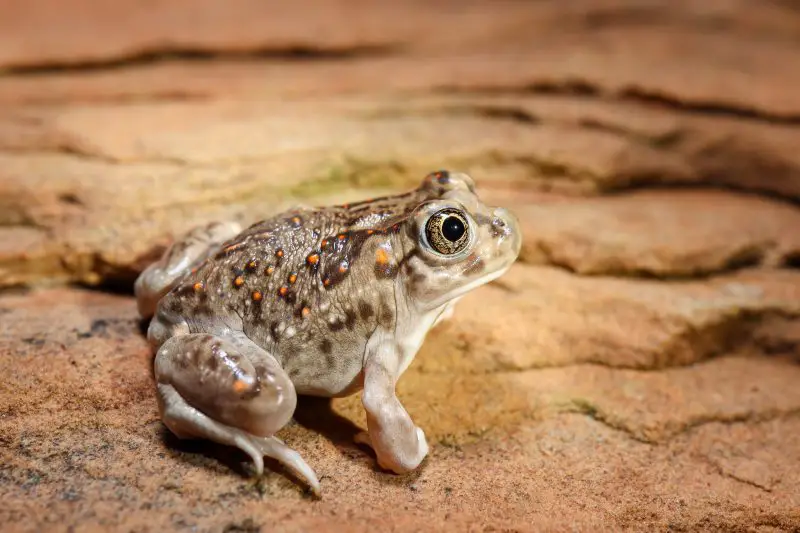
The Plains Spadefoot is a fascinating and unique amphibian found in the drier regions of Montana, particularly across the eastern plains and grasslands. Despite its name, this species is not a true frog but rather a toad-like amphibian with several frog-like characteristics. It has a short, stout body with smooth, somewhat moist skin, unlike the warty texture of typical toads. The coloration ranges from grayish-brown to olive green, often mottled with darker spots or patches that blend perfectly with sandy or grassy soils. One of its most distinctive features is the sharp, black, keratinized “spade” on each hind foot, which it uses to dig into loose soil — a trait that gives it its common name.
Adult Plains Spadefoots typically measure between 1.5 and 2.5 inches in length, with females usually being slightly larger than males. They have a short snout and vertically elliptical pupils, which are key identifiers distinguishing them from other frogs and toads. Their skin texture is smooth and slightly glossy, and their limbs are short but powerful, well adapted for burrowing rather than long-distance hopping. When handled, they may emit a faint odor, sometimes described as a peanut butter-like scent, which is unique among North American amphibians.
Behaviorally, the Plains Spadefoot is a highly specialized species that spends most of its life underground, emerging only during warm, heavy rains. These “explosive breeders” can appear overnight in temporary pools or flooded fields after a thunderstorm. The males produce a loud, duck-like snoring call to attract females. Once mating occurs, females lay hundreds of eggs in shallow pools that may dry up within days or weeks. Tadpoles grow at a remarkable speed, sometimes completing metamorphosis in as little as two weeks, an adaptation to their ephemeral breeding sites.
The species’ habitat is closely tied to the arid and semi-arid regions of Montana’s eastern plains. They prefer sandy soils or loose, loamy ground that allows for easy burrowing. During dry seasons, they remain buried underground, often several feet deep, encased in a cocoon of shed skin that helps retain moisture. When conditions are right — typically late spring or summer rains — they surface to feed on insects, spiders, and small invertebrates, replenishing energy reserves before returning underground.
In Montana, Plains Spadefoots are most commonly found in the eastern half of the state, including areas around Miles City, Glendive, and the Great Plains region. They are especially active in the Missouri River basin and prairie pothole areas. Though not frequently seen due to their secretive lifestyle, their sudden mass appearances after rainfall are one of the most remarkable natural events in Montana’s amphibian world. Their adaptability to harsh, dry environments and their rapid breeding cycle make the Plains Spadefoot an essential and resilient component of the state’s grassland ecosystems.
FAQs About Frogs in Montana
What types of frogs can be found in Montana?
Montana is home to several native frog species, including the Columbia Spotted Frog, Northern Leopard Frog, Wood Frog, Pacific Treefrog, Boreal Chorus Frog, and the Plains Spadefoot. These amphibians inhabit a variety of environments — from high mountain wetlands and forest ponds to prairie potholes and grasslands. Each species has unique adaptations to survive Montana’s diverse and often harsh climates.
Where is the best place to see frogs in Montana?
Frogs in Montana are most easily observed during spring and early summer, particularly near wetlands, ponds, marshes, and slow-moving streams. Areas near Glacier National Park, the Bitterroot Valley, and the western mountain ranges are excellent for spotting species like the Columbia Spotted Frog and Wood Frog. On the other hand, the eastern plains and prairie regions are home to Boreal Chorus Frogs and Plains Spadefoots, especially after heavy rains.
When is the frog breeding season in Montana?
Most Montana frogs breed from March through early July, depending on elevation and temperature. Early breeders like the Wood Frog and Boreal Chorus Frog emerge as soon as the snow melts, while others such as the Columbia Spotted Frog and Pacific Treefrog call throughout spring and early summer. The Plains Spadefoot breeds explosively after heavy rains, sometimes completing its entire reproductive cycle in just a few weeks.
Are any frog species in Montana endangered or declining?
While most frog species in Montana remain stable, Northern Leopard Frogs have experienced noticeable population declines in some regions due to habitat loss, pollution, and diseases like chytrid fungus. Conservation programs are actively monitoring amphibian populations across the state, focusing on restoring wetlands and maintaining clean aquatic habitats essential for their survival.
What do frogs in Montana eat?
Frogs in Montana have varied diets consisting mainly of insects, spiders, worms, beetles, flies, and small crustaceans. Tadpoles usually feed on algae and plant material before metamorphosis. As adults, frogs play a vital ecological role by controlling insect populations, making them important components of both aquatic and terrestrial ecosystems.
How do frogs survive Montana’s cold winters?
Several frog species in Montana have remarkable adaptations for winter survival. For example, Wood Frogs and Boreal Chorus Frogs can withstand partial freezing by producing natural antifreeze compounds in their blood. Aquatic species such as the Columbia Spotted Frog hibernate underwater in muddy pond bottoms, where temperatures remain above freezing throughout winter.
Can I hear frogs calling at night in Montana?
Yes, especially during spring and early summer evenings. The Boreal Chorus Frog produces a loud, comb-like trill, while the Pacific Treefrog is famous for its “ribbit-ribbit” call. The Plains Spadefoot can also be heard after heavy rains, its distinctive snore-like call echoing across the plains. These calls are most active around dusk and after rainfall.
Are frogs important to Montana’s ecosystem?
Absolutely. Frogs serve as both predators and prey in Montana’s ecosystems. They help regulate insect populations and, in turn, provide food for birds, snakes, and mammals. Because frogs are sensitive to environmental changes, they are also excellent indicators of wetland health and overall ecosystem stability across Montana’s diverse landscapes.



